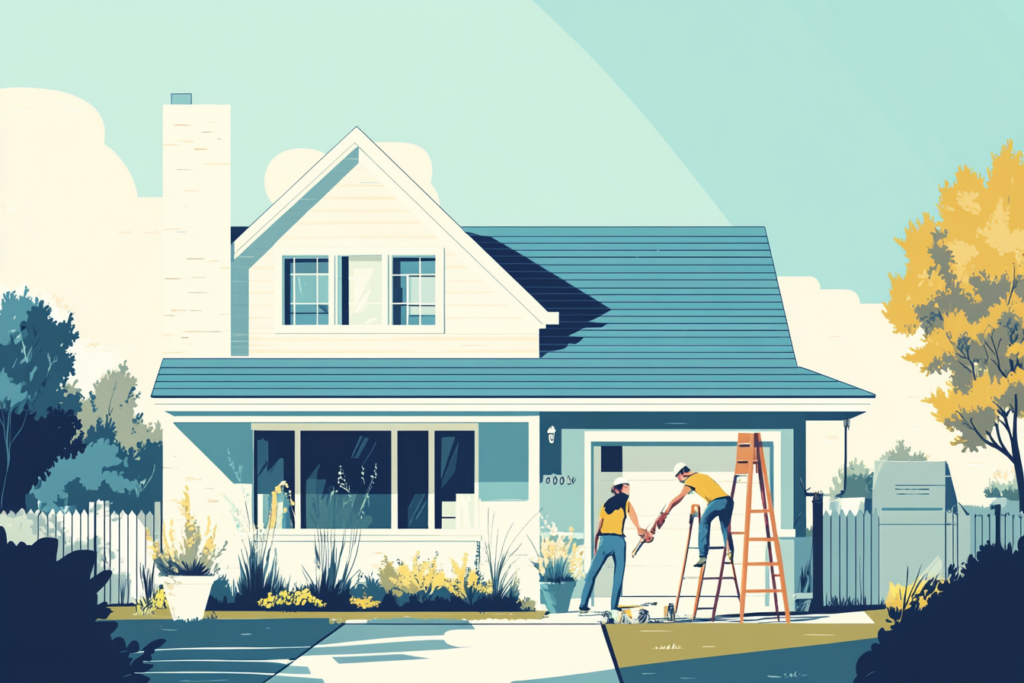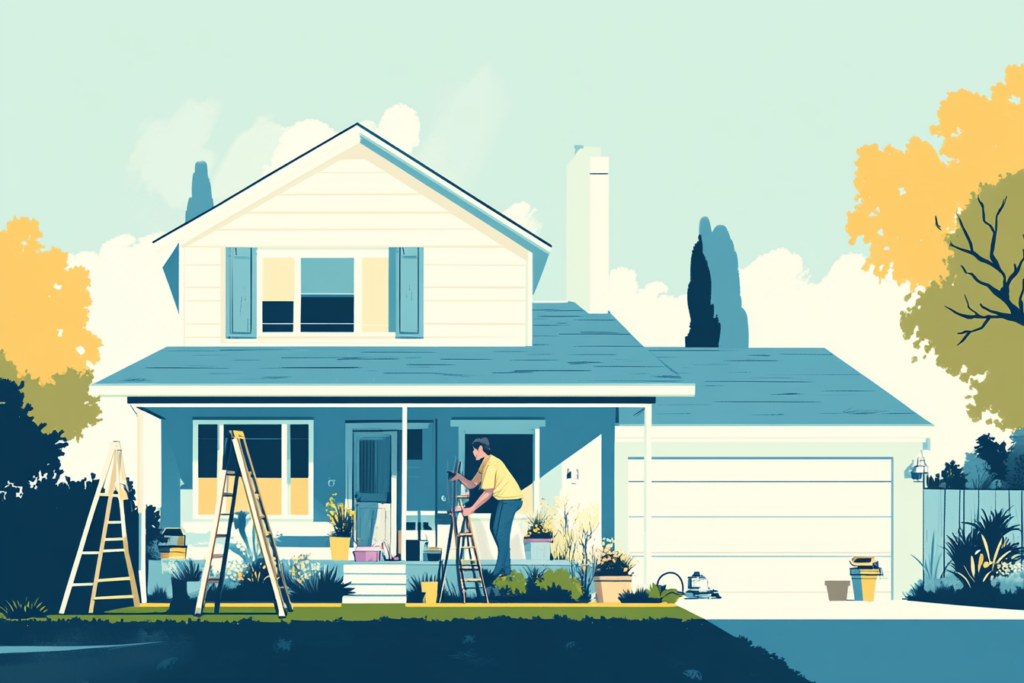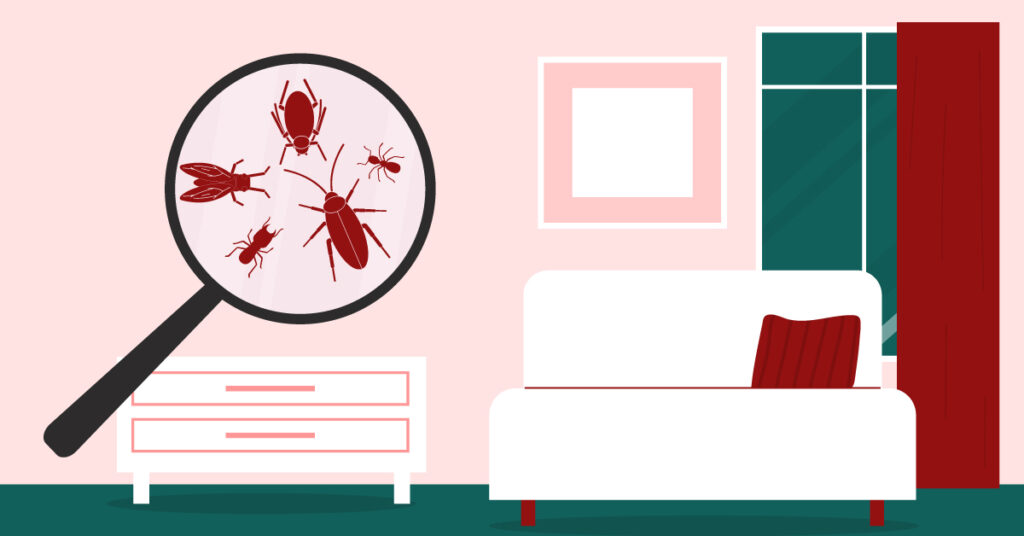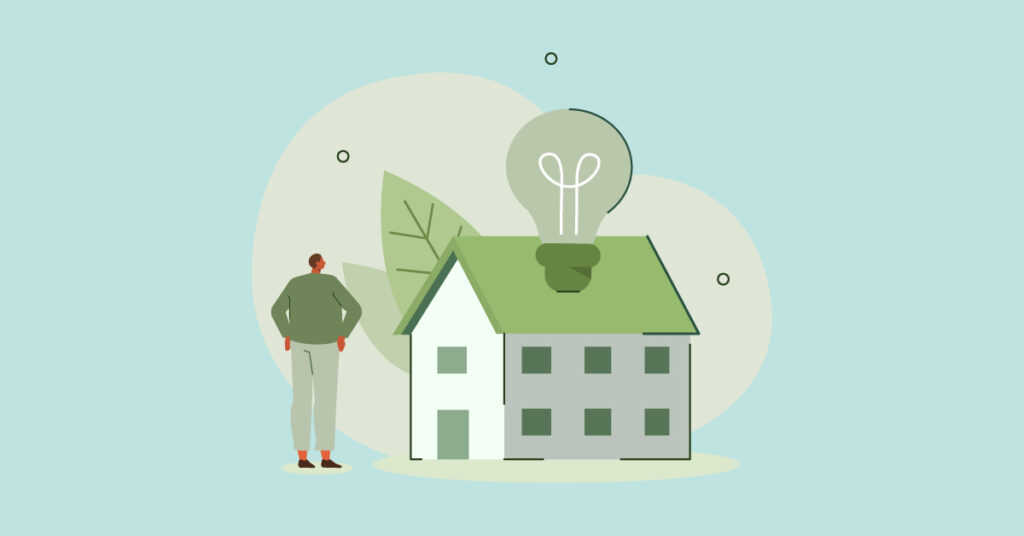Hot weather, humidity, and heavy use of cooling systems can put serious stress on your home. Summer is the time when small issues like clogged gutters, worn-out seals, or poor insulation can lead to big problems—fast. Whether you’re staying home or planning to travel, a summer maintenance routine can help you save energy, prevent damage, and enjoy your space all season long.
Use this practical checklist to keep your home safe, cool, and efficient.
1. Inspect and Maintain Your HVAC System
Your air conditioning system works harder than anything else in the summer. Keeping it in top shape ensures comfort and saves energy.
- Replace air filters every 30–60 days
- Clean air vents and remove dust buildup
- Schedule a professional HVAC tune-up (ideally before peak heat)
- Check the outdoor condenser unit for leaves, grass, or debris
- Ensure at least 2 feet of clearance around the condenser
A neglected AC system can increase your energy bill and reduce the lifespan of your unit. According to the U.S. Department of Energy, regular maintenance can improve efficiency by 15%.
2. Clean and Inspect Ceiling Fans
Fans help circulate cool air throughout a room, reducing the need for air conditioning.
- Dust and clean each blade to avoid spreading allergens
- Switch blade direction to counterclockwise for summer airflow
- Tighten any loose screws or wobbling fixtures
If the fan is making a lot of noise, check the motor housing and mounting box. Many issues can be fixed with a screwdriver and some lubricant.
3. Check for Leaks and Seal Openings
Summer heat brings insects—and high energy costs. Sealing gaps keeps cool air in and pests out.
- Inspect weatherstripping around windows and doors
- Re-caulk any cracked window seals
- Check for leaks in hose bibs and outdoor faucets
- Use foam sealant around pipes, cables, and vents entering the home
Pay close attention to attics, basements, and crawlspaces. Even small air leaks can increase cooling costs by 20-30%.
4. Test Smoke and Carbon Monoxide Detectors
Increased use of grills, fans, and appliances raises the risk of electrical or cooking fires.
- Press the test button on each device
- Replace batteries if needed
- Confirm detectors are not expired (check the manufacture date on the back)
- Vacuum around detectors to remove dust that may block sensors
Install at least one smoke alarm on every floor and near all bedrooms.
5. Inspect Your Roof and Gutters

Summer storms and high UV exposure can take a massive toll on your roof and drainage systems.
- Look for cracked, curling, or missing shingles
- Check flashing around chimneys and vents
- Clear gutters and downspouts of leaves, dirt and debris
- Ensure water drains at least 3 feet away from the foundation
Consider using binoculars or hiring a roofer if your roof is steep or hard to access safely.
6. Clean Windows and Screens
Clean windows improve natural light and reduce glare during long summer days.
- Wash both sides of each window with a vinegar or soap solution
- Check for signs of fogging (a sign of seal failure in double-pane windows)
- Inspect window screens for holes or sagging
- Patch or replace damaged screens to keep bugs out
If you use storm windows, store them in a dry place and label them clearly for easy reinstallation in the fall.
7. Service Lawn Equipment
Mowers, trimmers, and blowers see their heaviest use in summer. A few basic checks can extend their life and ensure safe operation.
- Sharpen mower blades for a clean cut
- Change the oil and replace spark plugs if needed
- Clean or replace air filters
- Inspect fuel lines for cracking or wear
Store any extra gasoline in approved containers away from heat or flame.
8. Inspect Your Deck, Porch, and Outdoor Structures
Outdoor woodwork takes a beating from the sun and rain. Check for safety and appearance.
- Look for loose boards or nails on decks and stairs
- Check railings for wobble or rot
- Power wash surfaces to remove mold and dirt
- Apply a weatherproof sealant or stain to exposed wood
Use a screwdriver to probe wood—if it sinks easily, rot is present and replacement may be needed.
9. Check Outdoor Plumbing and Sprinklers
Overwatering can waste money, while under-watering can ruin your landscaping.
- Test each sprinkler zone for coverage and leaks
- Adjust spray heads to avoid sidewalks and siding
- Inspect garden hoses for cracks or bulges
- Install timers or moisture sensors for efficiency
Avoid watering at midday to reduce evaporation—early morning is best.
10. Seal Driveways and Walkways
Heat and UV rays cause concrete and asphalt to expand and contract, which can result in cracks.
- Sweep and clean paved areas with a pressure washer
- Use concrete caulk or crack filler on visible damage
- Apply a sealant for long-term protection
Do this in dry weather, and avoid foot traffic for at least 24 hours.
11. Manage Pests Around the Exterior
Warm weather brings ants, termites, wasps, and rodents looking for shelter and water.
- Clear brush and debris 2–3 feet from the home’s foundation
- Trim trees and shrubs away from rooflines
- Remove standing water from planters, buckets, and gutters
- Set traps or bait stations in garages and crawlspaces
Check for signs of pest activity near trash bins, under porches, and behind outdoor equipment.
12. Clean Dryer Vents and Exhaust Ducts
Lint buildup can cause fires, especially in the summer when clothes dryers work overtime.
- Remove and clean the dryer lint trap after each load
- Detach the vent hose and vacuum out any built-up lint
- Clean the exterior dryer vent hood and make sure it closes properly
If clothes take longer to dry, it’s a sign the vent is restricted.
13. Prep for Summer Storms
Depending on where you live, summer storms can bring lightning, high winds, or flooding.
- Trim trees and remove dead branches
- Check sump pumps and battery backups
- Anchor outdoor furniture and umbrellas
- Create an emergency kit with flashlights, first aid supplies, batteries, and bottled water
Store any important documents in a waterproof container or cloud backup.
Conclusion
Summer home maintenance isn’t just about keeping things running—it’s about preventing problems before they start. These checks save money, protect your property, and help your systems run more efficiently during the most demanding season of the year.
Stay on top of this checklist and you’ll reduce emergency calls, lower utility bills, and enjoy a worry-free summer at home.
You might also be interested in: 12 Sustainable Landscaping Practices to Practice This Spring




